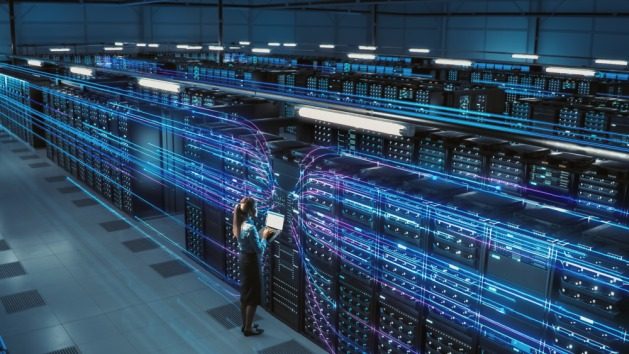AI Policy Can't Ignore Climate Change: We Need Net Zero AI Emissions

WASHINGTON DC, Apr 25 (IPS) - Artificial intelligence provides amazing potential for advancement across fields, from medicine to agriculture to industry to the entertainment business, even as it generates significant concerns. AI can also improve the efficiency of energy production and use in ways that can reduce greenhouse gas emissions.
But AI requires a lot of computational capacity, powered by electricity which can in turn generate additional emissions.
Unfortunately, according to the climate modeling of the International Energy Agency and others, there isn’t room for a new additional source of energy emissions. Consequently, AI must have net zero emissions to uphold our climate goals.
AI can lower emissions in a multitude of activities across a variety of sectors. For example, AI can help reduce the emissions from manufacturing, food systems and road transport while increasing zero-carbon electricity production from solar and wind farms.
But recent reports point to burgeoning demand, notably in the U.S., for more electricity production, driven in part by the computing needs of AI. With that comes related rising emissions.
Moreover, as Nividia announced its newest, most powerful AI performance chip, rising demand for AI and the electricity it needs will likely increase even further. And this will happen not just in the U.S., but worldwide, as reflected in Saudi Arabia’s plan to invest $40 billion in AI.
While there may be some efficiency gains because of AI, we can anticipate a net increase in electricity demand, particularly as the entertainment industry and others develop new and creative uses for AI.
This AI-driven increase will likely begin within the next several years, well before the power network has had the time to convert from the current fossil fuel-based system to a low-emissions renewables-dominated one.
Consequently, expect more emissions from the power sector in the near term. Over the longer term, it will also reduce the available carbon budget, which is the amount of future emissions that can be accommodated within internationally agreed temperature targets.
The IEA’s Net Zero Emissions by 2050 climate scenario and similar climate pathways are built on balancing carbon dioxide emissions from the energy sector and carbon dioxide removals. Deploying renewables, energy efficiency, fuel switching and other low-carbon technologies are keys to lowering emissions to a level that can be balanced through removals.
Unmanaged AI, however, may hamper this effort, as its thirst for electricity results in a potential new source of emissions to be eliminated. AI needs to “pay for itself” regarding the climate by having net zero emissions and, preferably, even net negative emissions.
How can we accomplish this? First, there must be a concerted effort to power data centers and other AI-related infrastructure through renewables in a manner that does not cannibalize low-emissions electricity generation projects for households and other consumers. Governments and the private sector — including local or remote data center users and private capital — must work together to increase investment in and accelerate renewables deployment.
A second possible tool is to add a high load computational surcharge for AI users and possibly other large computer activities, such as cryptocurrency mining, to help finance additional investment in renewables.
Third, AI’s climate impact should be added to discussions on managing possible negative effects, such as AI’s potential for misinformation and disruptions to job markets. For example, the United Nations recently approved a U.S.-led resolution to make AI “safe, secure and trustworthy.” Similar initiatives need to be expanded to address AI’s potential emissions impact.
Fourth, and potentially most effectively, AI needs to be turned on itself to find mechanisms that result in net zero emissions and even make net negative emissions possible. This should include the development of innovative emissions reduction measures, as well as more ways to increase zero-carbon electricity production with a focus on achievable solutions.
There is also a need for better methodologies to measure both the increase and the savings in emissions that AI generates. This fourth pole should involve a combination of private sector-led action, inter-governmental initiatives and public-private research efforts.
As AI and the necessity for more electricity production take off and possibly accelerate even beyond current projections, it is important to manage potentially significant increases in greenhouse gas emissions that would undermine our climate goals. Governments, businesses and others should integrate the need for net zero AI emissions into their discussions on addressing AI’s impacts.
This oped was first published in The Hill
Philippe Benoit is the managing director at Global Infrastructure Advisory Services 2050. He previously held energy sector management positions at the International Energy Agency and the World Bank, and most recently was adjunct senior research scholar at Columbia University’s Center on Global Energy Policy.
© Inter Press Service (2024) — All Rights ReservedOriginal source: Inter Press Service
 Global Issues
Global Issues